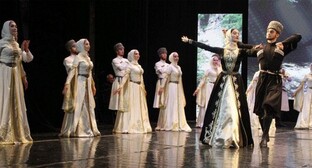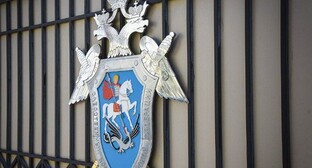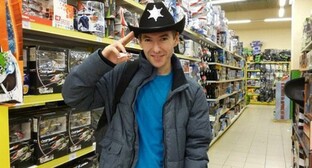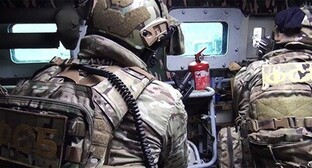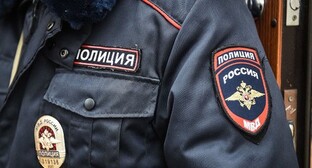08 September 2004, 15:37
Beslan: the Hostage-taking at the School
(information prepared on the basis of monitoring and interviews with the local population)
On 1, 2 and 3 September 2004 members of the Human Rights Centre 'Memorial' were present in Beslan (Republic of North Ossetia-Alania). The results of their observations and their survey of a number of released hostages are set out below:
On the morning of 1 September 2004 at School №1 in Beslan the parade to celebrate Learning Day was due to take place at 10 a.m. The pupils and their families gathered in the yard to await the start of the ceremony. The children had come to school in their ceremonial uniform, with flowers and balloons. Everyone was in festive mood. Thus, when armed masked men burst into the schoolyard many at first thought that it was a prize-draw, and assumed the shooting was the sound of bursting balloons. When it became clear within a few minutes that this was no joke, the parents and children attempted to flee. Some managed to escape, but the majority were herded into the school building by the terrorists. Two policemen guarding the school offered resistance and killed one of the terrorists, after which they were themselves shot dead. The terrorists shot the father of a schoolboy at point blank range; another father received a gunshot wound in the leg.
The terrorists allocated the hostages around the school buildings in the gym and the classrooms. All those questioned (hostages and their relatives) without exception confirmed that there were over a thousand people held in the school. The bulk of the children and their parents were in the gym. So many people were herded in there that everyone had to sit on the wooden floor with their legs drawn in. It was not possible to lie down or move around the hall. So forty-four-year-old Zhanna Dzeboeva was located in the gym together with her daughter Diana. Her nephew, Alan Tsgoev, was sitting separately at the other end of the hall. Throughout the three days of captivity they were not allowed to approach each other. Zhanna could only watch the boy crying all the time.
During the first 24 hours the hostages were allowed to drink. Household buckets for washing the floor were filled with water from the tap and enamel mugs were used to allow the children to drink. Visits to the toilet were made in groups of several people. Three or four women were chosen from amongst the female hostages and ordered to take the children there one by one. They were not allowed to use the school toilets, a former shower room was used although there were no actual toilets. On the Thursday and the Friday water was not allowed. According to several of those questioned, the children were made to urinate on their clothes and suck the urine. Alan Tsgoev related that he ate the leaves of a houseplant which happened to be nearby.
As it was very hot and stuffy in the gym almost all the children were made to undress down to their underclothes. According to Zemfira Sergeyevna Hodova (home address: 1 Terski Lane), who was released on 2 September, on the first day the gunmen did not mistreat the hostages. Towards the end of the second day they began to get noticeably more nervous, and began to shout and to shoot into the air. The children, debilitated by thirst, hunger and the stuffy atmosphere, began to cry and make noise, which seriously annoyed the terrorists.
Information differs regarding the total number of terrorists who seized the school. The hostages gave figures ranging from 16 to 40. There were two women amongst them (all those questioned confirmed that there were two), dressed in dark long dresses with "shahidka belts". According to one of the female hostages, the "shahidki" looked very young – 17 or 18 years old. Some of the men hid their faces with masks. According to the released hostages, the terrorists were of various ethnic origins included Ingush, Chechens, Ossetians and Russians. The gym was usually guarded by 2 or 3 people, while the remaining terrorists were in other parts of the school.
According to the hostages, the gym was mined around its entire edge. Explosive devices were attached to wires slung across the entire length of the hall from one basketball goal to the other. During the day of 3 September some of these devices exploded at the very beginning of the events which led to the death of so many hostages. What caused this, and whether this actually occurred before or after the start of the storming of the school, is still not clear.
The terrorists virtually did not communicate with the hostages. This was extremely stressful for the adults: they had no idea what demands had been made, were unable to calculate the chances of a positive outcome to the negotiations – their fate was being decided independently of them.
On 2 September [former President of Ingushetia] Ruslan Aushev arrived at the school. He quickly crossed the gym and went into the negotiation room. He said briefly to the hostages, "Don't worry, we'll soon get you all out." Before Aushev arrived the women with children of breast-feeding age were gathered into a separate room and he led them out.
Meanwhile the relatives of the hostages were gathered on the square by the town Palace of Culture, approximately 300 metres from School №1. It was here also that television cameras had been set up to broadcast reports on developing situation to Russian and foreign television channels. The relatives gathered in groups of up to about 15 people. Many made the journey from distant villages to give support to their relatives. In the cinema at the Palace of Culture a television was set up to watch the latest news. Throughout 1 September and during the day of 2 September the relatives were generally calm. The Head of the Analysis and Information Department of the Administration of the President of the Republic of North Ossetia-Alania, Lev Bartuyevich Dzugayev would periodically come out to talk to them and report on the latest situation. During each announcement he underlined that the use of force to resolve the situation had been excluded and that the army staff would negotiate with the terrorists. The majority of those people questioned that day felt certain that the Government would do everything to save the children, and avoid storming the school.
The situation began to heat up towards the evening of 2 September . Dzugayev's announcements became fewer and fewer and container less and less information. It became apparent that the negotiations with the terrorists were not having the required effect, and those in power were not prepared to carry out the terrorists' demands.
The first widespread outburst of emotions came soon after the release of the group of hostages on 2 September. When the representatives of the army staff read out the names of those released, some of those whose children were not in the lists, began to get hysterical. Everyone, including the men, were crying. From this point on the tension only grew.
Towards the evening of 2 September groups of men in civilian clothes began to gather in the vicinity of the Palace of Culture. Some of them were armed. At around 10 p.m. some representatives of the North Ossetia governing structures and some local men put on white gauze armbands. When asked "what are the armbands for?", two civilians in camouflage uniform without identifying marks (judging by their accent, they were of South Ossetian origin) replied: "We are fighters. The armbands are to be sure of seeing each other." "Is the school going to be stormed?" we asked. "Not until our commander gives the word."
"If something happens here, our men will all resist. They're ready to go in there now, but those in charge won't let them," explained a woman who lived in a part of the town near the school. "In our courtyard there is no-one left but the fathers, all the women and children are there in the school," she said. "Do you think they could just sit there quietly? Not a single terrorist will get out of here alive," as way of explanation said a former member of the law enforcement forces. "And if our dear government lets the children die, they'll have to answer for it too." "What do you think, will these events lead to an escalation of the ethnic troubles?" we asked. "Of course they will. As long as the powers that be don't stir up the conflict again then it won't be another 1992. People have become cleverer. They won't rush off to fight straightaway. I was a participant in those events myself; spent six months in hospital afterwards. At the Ministry of Internal Affairs they didn't even make a note that I had been wounded. Nobody needs a war."
By 11 p.m. on 2 September the power structures had reinforced their positions around the school. Armoured troop carriers were on nearby streets around the school perimeter and tanks had been moved into position near the railway lines. However during the evening and the night nothing happened.
On 3 September at 6.20 – 6.30 a.m. shots from a grenade launcher could be heard coming from the school.
At 11 a.m. the President of the Republic of North Ossetia-Alania Alexander Dzasohov, spoke to the relatives gathered in the Palace of Culture. He said that they would not storm the school.
At approximately 1 p.m. chaotic shooting started and explosions could be heard in the vicinity of the school. No-one could understand what was happening. People were running from house to house shouting "They're storming the school! The children are going to die!" Many were in a state of shock, shouting, crying, clutching their heads.
Very soon the first hostages appeared. The children were running out of the school, the locals began taking them home and the injured to hospital. There were not enough ambulances. The injured were put into private cars. At first the corpses were also being sent to the hospitals, later those who had been killed were laid out on the streets, near the back entrance to the school. Amongst the corpses we saw only women and children. There were many armed men in civilian clothes milling about.
Many of the hostages had been seriously wounded. With the unaided eye it was possible to ascertain that the injuries were for the most part from shell splinters. The hostages' faces and clothes were smeared with soot and brick dust.
After 3 p.m. the shooting began to die down. Several people, identified as "terrorists", were brought out of the school. One of them, who had already been wounded, was beaten to death by the crowd. Another injured man was set upon by the crowd but managed to convince his attackers that he was not a terrorist. Journalists tried to photograph this episode. They were also set upon by the incensed people, and some were slightly injured. Not far from the Palace of Culture a soldier was struck in the face by a man. The aggressive mood intensified. Near the post office indignant people gathered on impulse around some groups of foreign journalists. One of them, a volunteer with a white gauze armband, curtly announced to the press: "There isn't anyone in command here. Nobody has explained what is happening. The people gathered here are close relatives who have the right to know what is happening to their children Nobody has done anything to save the hostages. Only Aushev got the children out. He was the only one to do anything for them. All these children he saved should be renamed Aushev." His views were clearly shared by those around him.
**
The main part of the operation was over by 6 p.m. Relatives went to look for their children at the Beslan Town Hospital. On the walls of the hospital blocks were lists of names of those hostages who had been taken to the various hospitals in Vladikavkaz.
In the hospital we were able to talk to several of the freed hostages. We were interested to find out exactly how the events of 2 and 3 September had developed. Here are their accounts:
The Tsgoyev family
(5 (A) Terski Lane, 14 Pervomaiskaya Street; to contact telephone 8867 373 71 08)
The hostages were:
Alan Tsgoev , 12
Zhanna Dzeboyeva, 44 (Alan's aunt)
Diana Dzandarova, 9 (Zhanna's daughter)
During the seizure of the hostages on 1 September Alan's father was shot in the leg.
The account is told by Alan, aged 12, with additional comments from his sister Irina, 20 (relating what was said by her aunt and other hostages)
"I was sitting in the gym. The other children were in the classrooms. On the television they said there were 354 hostages but that is not true. There were more than a thousand of us. I saw 16 terrorists and also two women. They spoke Russian to us but amongst themselves they spoke some other language. They did not give us anything to drink. That is, they did on the first day but not afterwards. They said 'urinate on your clothes and drink'. But I didn't do that. They tried to set up a television in the gym but they couldn't plug it in. They had beards down to their waist. There were Ossetians and Russians. At first everyone was crying but they said that they would kill us if we made a noise. They were always shouting 'Shut up Everyone be quiet!'. I was very hot. On the second day the women blew themselves up in the schoolyard. I didn't see it but everyone said they did. They gave themselves some kind of injection then went out into the yard and blew themselves up.
I was freed by the soldiers. First there was an explosion. Some say that it was out troops who blew their way in. Others say that it was the terrorists who accidentally touched the wires and blew themselves up. Five of them were killed by this explosion. Straight after the explosion the soldiers ran into the gym. We didn't understand what was going on. A very heavy table fell on me and I thought I had already died. Then an OMON policeman ran over and dragged me out. Then I was given water."
Irina:
"We didn't sleep for 3 days. Either we sat in the square, or ran home to watch the news. We cried so much we couldn't see for tears. When they stormed the school we thought they'd all be killed. Then on the TV news we saw our Alan sitting with the soldiers and drinking water. Perhaps it wasn't Alan but we thought it was. We ran like crazy to the hospital to look for him. He was saved by a policeman from the OMON. Many of the children were injured by shell splinters. People are saying that when they ran away they were fired on. It's not true. They were injured by shell splinters. There were explosions there. Some say two, but in fact there were 5, maybe 25."
Diana Tkhoyeva, 35:
"I was sitting in the gym. I was dragged out by the cops. I heard two explosions. Then everything fell in on us and I lost consciousness. I don't think they fired at us. But I can't really remember, my head doesn't seem to be working properly."
The Gafurov family
The hostages were:
Valeriya Gafurova, 8
Her grandmother
"We were sitting in the gym. Then there was an explosion and the ceiling fell in on us. We were completely covered in brick dust. We were dragged out by one of the spetsnaz soldiers. There were many people killed there. We're OK, thank God."
**
During the evening of 3 September the situation remained extremely tense. In Beslan large groups of armed men in civilian clothes with white armbands appeared on the streets. The anti-Vainakh (Ingush-Chechen) and anti-government mood is growing.
5 September 2004
Source: Memorial Human Rights Center (Moscow, Russia)
